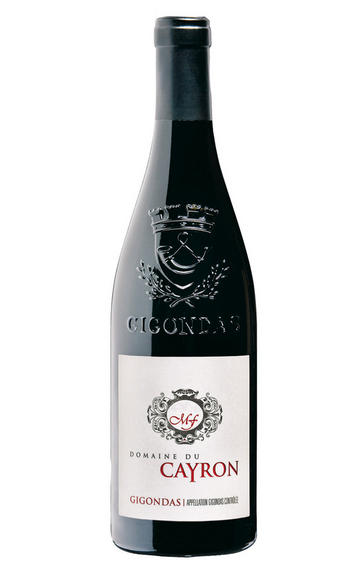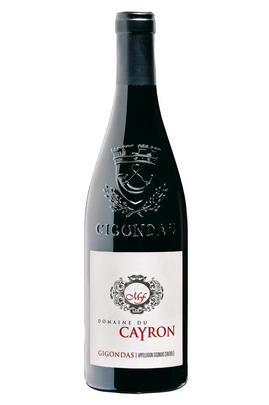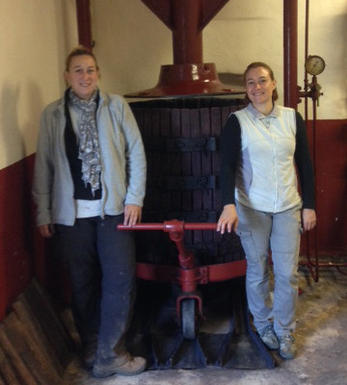
2020 Gigondas, Domaine du Cayron, Rhône

Critics reviews
There are some airy cherry scents among the berry fruits here. Light-bodied, fresh and appealing, with reticent tannins and bright acidity which make for a well-balanced, easy-going, unforced wine that will give some Gigondas pleasure in the first few years after bottling and into the medium term.
Drink 2022 - 2027
Matt Walls, Decanter.com (October 2021)
About this WINE

Domaine du Cayron
This female-led family domaine was founded in 1840. Today, it is run by the three sisters Cendrine, Roseline and Delphine who represent the fifth generation of the Faraud family. The domaine spans 17 hectares, spread over 20 plots throughout the Gigondas appellation. They extend from the higher-altitude Col du Cayron at 430 metres – plots that lie in the shadows of the awe-inspiring Dentelles de Montmirail for much of the day – down to the alluvial plains of Bois de Menge at 140 metres.
True to the simplicity of Gigondas, Domaine du Cayron produce only one wine: a balanced blend of all their plots and terroirs, mixing concentrated old vines with younger. The average age of their vines is 45, with the oldest planted in 1920. Their winemaking couldn’t be more traditional and their cellar has seen few changes since it was built in 1937. Indeed, they only upgraded from a wooden basket press to a pneumatic press in 2015. Grapes are harvested by hand, mostly fermented as whole bunches and aged in concrete and old foudres.
In 2021 they continued to partially destem – a technique they first explored in ’20, but one which becomes key in cooler years to avoid incorporating underripe stalk tannins. They weren’t affected by frosts this year so their yield is fairly typical. Their wine displays refined concentration alongside the freshness and purity that has come to characterise this vintage.

Grenache/Garnacha
Grenache (Noir) is widely grown and comes in a variety of styles. Believed to originate in Spain, it was, in the late 20th century, the most widely planted black grape variety in the world. Today it hovers around seventh in the pecking order. It tends to produce very fruity, rich wines that can range quite widely in their level of tannin.
In many regions – most famously the Southern Rhône, where it complements Syrah and Mourvèdre, among other grapes – it adds backbone and colour to blends, but some of the most notable Châteauneuf du Pape producers (such as Château Rayas) make 100 percent Grenache wines. The grape is a component in many wines of the Languedoc (where you’ll also find its lighter-coloured forms, Grenache Gris and Blanc) and is responsible for much southern French rosé – taking the lead in most Provence styles.
Found all over Spain as Garnacha Tinta (spelt Garnaxa in Catalonia), the grape variety is increasingly detailed on wine labels there. Along with Tempranillo, it forms the majority of the blend for Rioja’s reds and has been adopted widely in Navarra, where it produces lighter styles of red and rosado (rosé). It can also be found operating under a pseudonym, Cannonau, in Sardinia.
Beyond Europe, Grenache is widely planted in California and Australia, largely thanks to its ability to operate in high temperatures and without much water. Particularly in the Barossa Valley, there are some extraordinary dry-farmed bush vines, some of which are centuries old and produce wines of startling intensity.


Buying options
Add to wishlist
Description
The blend reflects the plantings of their vineyards, with 70% Grenache, 15% Cinsault, 14% Syrah and 1% Mourvèdre. There is a distinctive nose of garrigue herbs, lavender, crunchy blackcurrants and a touch of lozenge. The palate brings black cherries, candied blueberries, more blackcurrants and a little chocolate. Wonderfully pure and enchanting, propped up by some silky, almost creamy tannins.
Drink 2023 - 2035
Georgina Haacke, Fine Wine Buyer, Berry Bros. & Rudd (March 2022)
wine at a glance
Delivery and quality guarantee